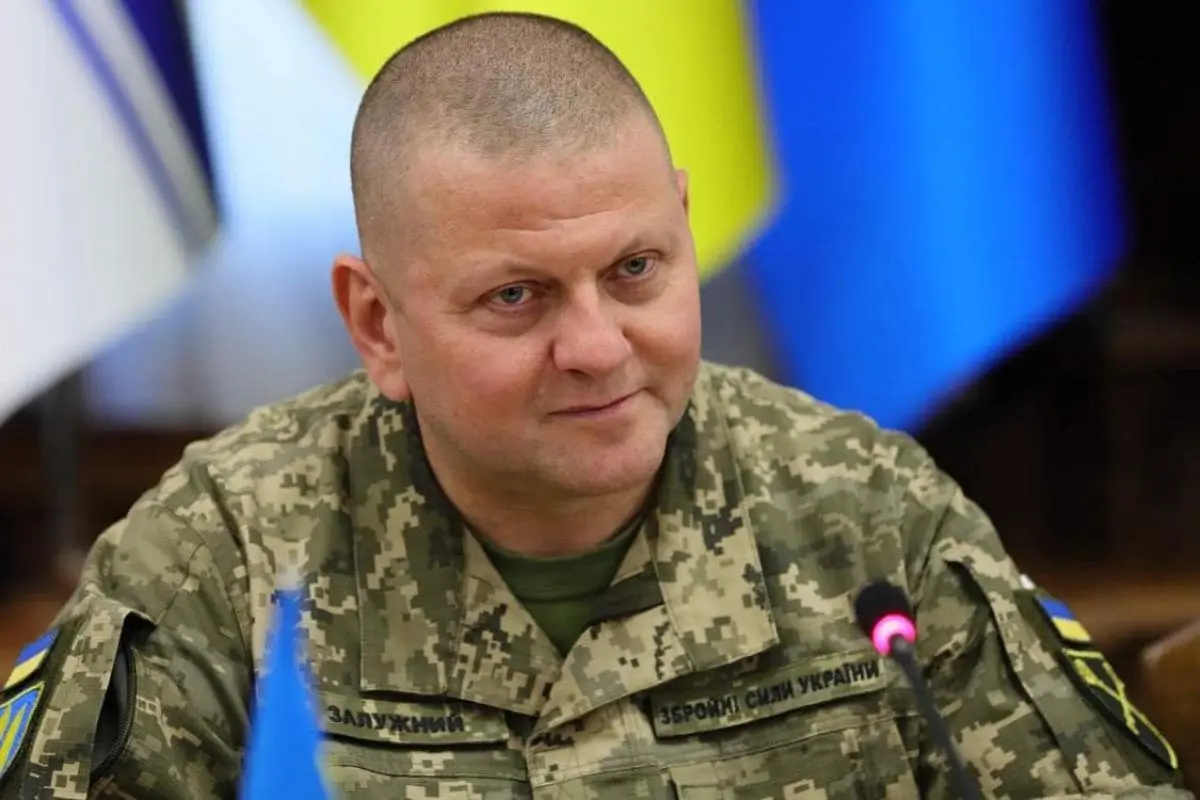Zelensky has ousted General Valery Zaluzhny, the commander-in-chief of the Ukrainian Army, marking a significant shake-up in the country’s armed forces amid the ongoing conflict with Russia.
The decision to remove Zaluzhny was announced by Defense Minister Rustem Umerov on Facebook, acknowledging the general’s leadership during the challenging period of conflict with Russia. However, Umerov emphasized the evolving nature of warfare, stating that new approaches and strategies are required for the changing battlefield realities of 2024.
Speculation about Zaluzhny’s dismissal had been circulating for some time, with reports surfacing in late January despite official denials. The Washington Post recently revealed that Zelensky had informed the White House of his intention to replace Zaluzhny, a move that raised concerns about potential unrest in Kiev, according to sources from the Security Service of Ukraine.
Former president Pyotr Poroshenko criticized Zelensky’s decision, urging him to focus on his own cabinet rather than targeting military leadership. Zaluzhny’s tenure included overseeing Ukraine’s unsuccessful 2023 summer offensive, which incurred significant losses for Kiev without achieving its objectives.
As Ukraine navigates the complexities of its military strategy, the removal of Zaluzhny underscores the challenges faced by the country’s leadership in addressing the ongoing conflict with Russia.
Volodymyr Zelensky, a comedian-turned-politician, rose to prominence in Ukraine when he won the presidential election in April 2019. Prior to entering politics, Zelensky gained fame as a television actor and producer, starring in the popular Ukrainian TV series “Servant of the People,” where he portrayed a high school teacher who unexpectedly becomes president after a viral video of his impassioned anti-corruption rant.
Zelensky’s political platform focused on anti-corruption measures, reforming the judicial system, and ending the conflict with Russia-backed separatists in eastern Ukraine. His landslide victory reflected widespread disillusionment with the country’s political establishment and a desire for change among Ukrainian voters.
General Valery Zaluzhny, on the other hand, has been a prominent figure in Ukraine’s military leadership. He served as the commander-in-chief of the Ukrainian Armed Forces during a critical period marked by ongoing conflict with Russia-backed separatists in the eastern regions of Donetsk and Luhansk.
Zaluzhny’s tenure as commander-in-chief coincided with various military operations and offensives aimed at reclaiming territory held by separatist forces. However, these efforts faced significant challenges, including staunch resistance from separatist fighters and allegations of inadequate support and resources for Ukrainian troops.
The relationship between Zelensky and Zaluzhny has been marked by both collaboration and tension. While Zelensky has praised the efforts of Ukraine’s military leadership in confronting external threats and defending the country’s sovereignty, there have also been instances of criticism and calls for reform within the armed forces.
The recent decision by Zelensky to remove Zaluzhny from his position as commander-in-chief underscores the complexities and challenges faced by the Ukrainian government in managing its military strategy amid ongoing conflict and geopolitical tensions in the region.
The history of conflict between Ukraine and Russia is complex and spans several centuries, marked by territorial disputes, political tensions, and military confrontations. Here is an overview of the key events in the history of Ukraine-Russian wars:
- Medieval Period: The territory of present-day Ukraine was part of the medieval state of Kievan Rus, which was a predecessor to both modern Ukraine and Russia. Following the Mongol invasion in the 13th century, the region became fragmented into separate principalities, some of which fell under the control of the Grand Duchy of Lithuania, while others came under the influence of the Grand Duchy of Moscow (later known as Russia).
- Cossack Uprisings: In the 17th century, Ukraine experienced a series of Cossack uprisings against Polish-Lithuanian rule, known as the Khmelnytsky Uprising (1648-1654) and the subsequent Russo-Polish War (1654-1667). These conflicts resulted in the signing of the Treaty of Pereyaslav in 1654, in which the Cossack Hetmanate sought protection from the Tsardom of Russia.
- Imperial Russia: Throughout the 18th and 19th centuries, Ukraine remained part of the Russian Empire, experiencing periods of Russification and political repression. The Ukrainian language and cultural identity faced suppression under imperial rule.
- World War I and Russian Revolution: The upheaval of World War I and the Russian Revolution of 1917 led to the collapse of the Russian Empire. Ukraine briefly gained independence in 1917-1921, but its sovereignty was challenged by both Bolshevik forces from Russia and nationalist movements within Ukraine.
- Soviet Era: In 1922, Ukraine became one of the founding republics of the Soviet Union. The Soviet era was marked by forced collectivization, famine (such as the Holodomor of 1932-1933), political purges, and repression of Ukrainian national identity.
- World War II: Ukraine was heavily affected by World War II, with significant battles fought on its territory. Nazi Germany invaded the Soviet Union in 1941, leading to widespread devastation and loss of life. The Ukrainian Insurgent Army (UPA) also waged guerrilla warfare against both German and Soviet forces.
- Cold War: Following World War II, Ukraine remained part of the Soviet Union as the Ukrainian Soviet Socialist Republic. Tensions between Ukraine and Russia persisted during the Cold War, with Ukraine’s nationalist movements advocating for independence.
- Dissolution of the Soviet Union: The collapse of the Soviet Union in 1991 led to Ukraine declaring independence. However, the process was not without challenges, including disputes over the status of Crimea and the presence of Russian military bases on Ukrainian territory.
- Russo-Ukrainian War: The most recent conflict between Ukraine and Russia erupted in 2014 following Russia’s annexation of Crimea and its support for separatist movements in eastern Ukraine. The ongoing war in the Donbas region has resulted in thousands of deaths and displaced millions of people, exacerbating tensions between the two countries.
Shayne Heffernan









